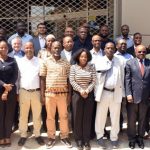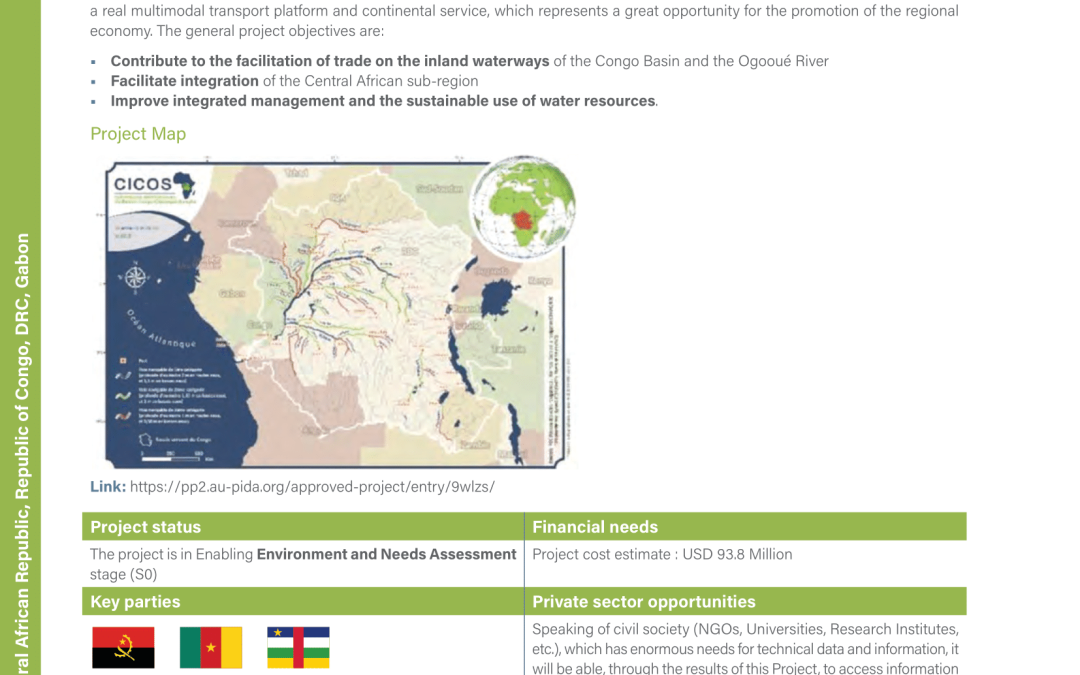
EN-NEPAD-PIDA-PAP2-Project-Prospectus-Web-1-92_64-64
The Congo Basin is an immense territory which covers around 3.7 million km2 (6.6% % of the area of the African continent). This Basin has a very dense hydrographic network, with navigable waterways estimated at more than 25 000 km in their natural state, of which at least 15 000 km are classified. Due to its geostrategic position, the waterway network, through its terminals, constitutes a real multimodal transport platform and continental service, which represents a great opportunity for the promotion of the regional economy.
The general project objectives are:
• Contribute to the facilitation of trade on the inland waterways of the Congo Basin and the Ogooué River
• Facilitate integration of the Central African sub-region
• Improve integrated management and the sustainable use of water resources.
EN-NEPAD-PIDA-PAP2-Project-Prospectus-Web-1-92_62-62
Lesotho – Botswana Water Transfer Project aims to implement a water conveyance system in Lesotho through South Africa to Botswana.
The project also includes the construction of a multi-purpose dam in Lesotho with a hydropower plant.
The project objectives are to:
• Water supply to Botswana, as well as Lesotho and South African municipalities along the route; beneficial to continued economic growth and implying commensurate socio-economic benefits
• Hydropower generation in Lesotho, in order to improve population access to electricity and to reduce dependency on imported energy supply
• Climate resilience enhancement from water shortages and droughts for communities in Botswana, Lesotho, and South Africa, which have negatively impacted agriculture sector outputs, factor remuneration, and general households’ welfare
• Creation of long term employment opportunities
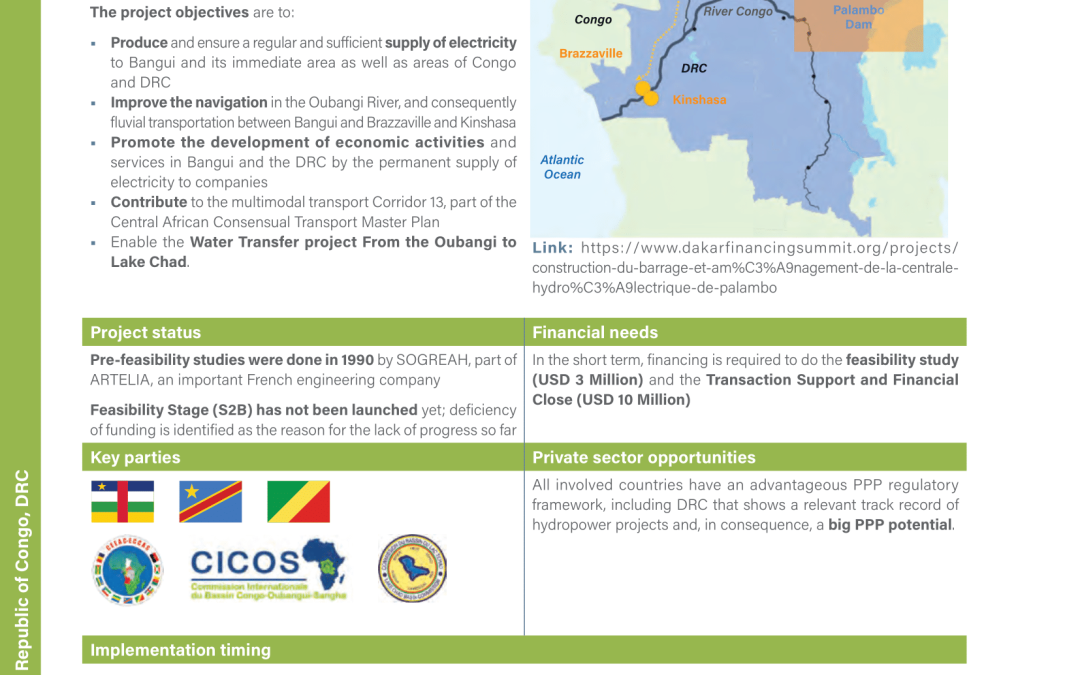
EN-NEPAD-PIDA-PAP2-Project-Prospectus-Web-1-92_62-62
The project comprises the construction of a dam to regulate the Ubungi and Congo rivers flow downstream of Bangui, mainly during the low water period, and a hydroelectric plant to serve the CAR’s capital and the neighboring area.
The project objectives are to:
• Produce and ensure a regular and sufficient supply of electricity to Bangui and its immediate area as well as areas of Congo and DRC
• Improve the navigation in the Oubangi River, and consequently fluvial transportation between Bangui and Brazzaville and Kinshasa
• Promote the development of economic activities and services in Bangui and the DRC by the permanent supply of electricity to companies
• Contribute to the multimodal transport Corridor 13, part of the Central African Consensual Transport Master Plan
• Enable the Water Transfer project From the Oubangi to Lake Chad.
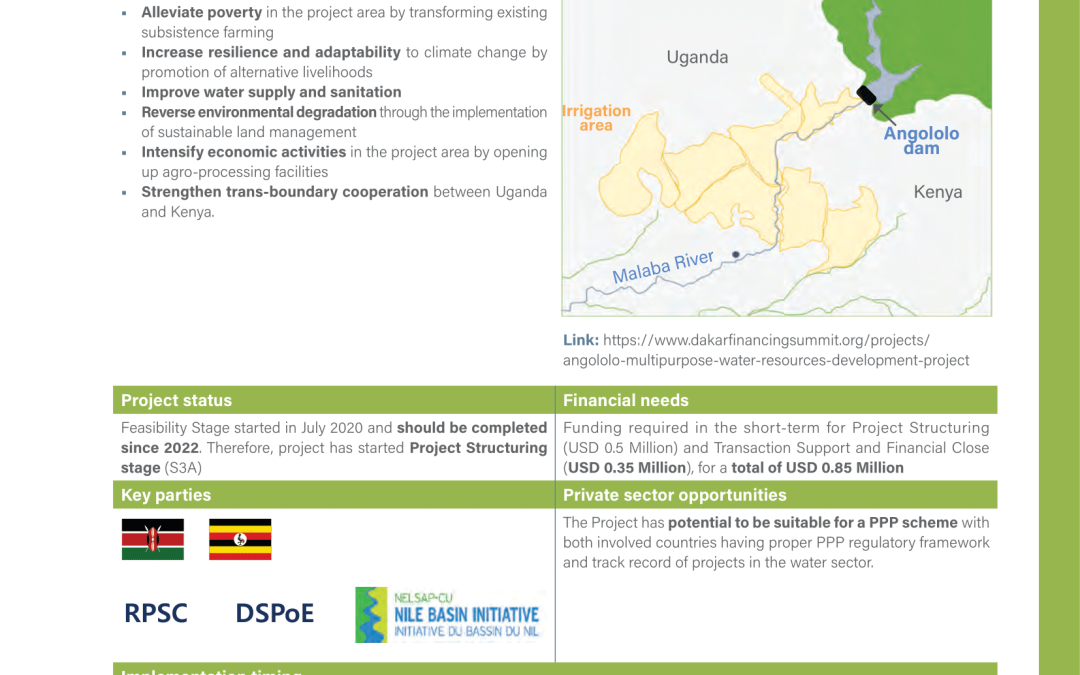
Download Prospectus
The project includes the construction of a dam and water storage reservoir, the development of irrigated agriculture, water supply and sanitation, as well as a system for flow regulation to control floods and manage drought situations. The project objectives are to:
• Alleviate poverty in the project area by transforming existing subsistence farming
• Increase resilience and adaptability to climate change by promotion of alternative livelihoods
• Improve water supply and sanitation
• Reverse environmental degradation through the implementation of sustainable land management
• Intensify economic activities in the project area by opening up agro-processing facilities
• Strengthen trans-boundary cooperation between Uganda and Kenya.
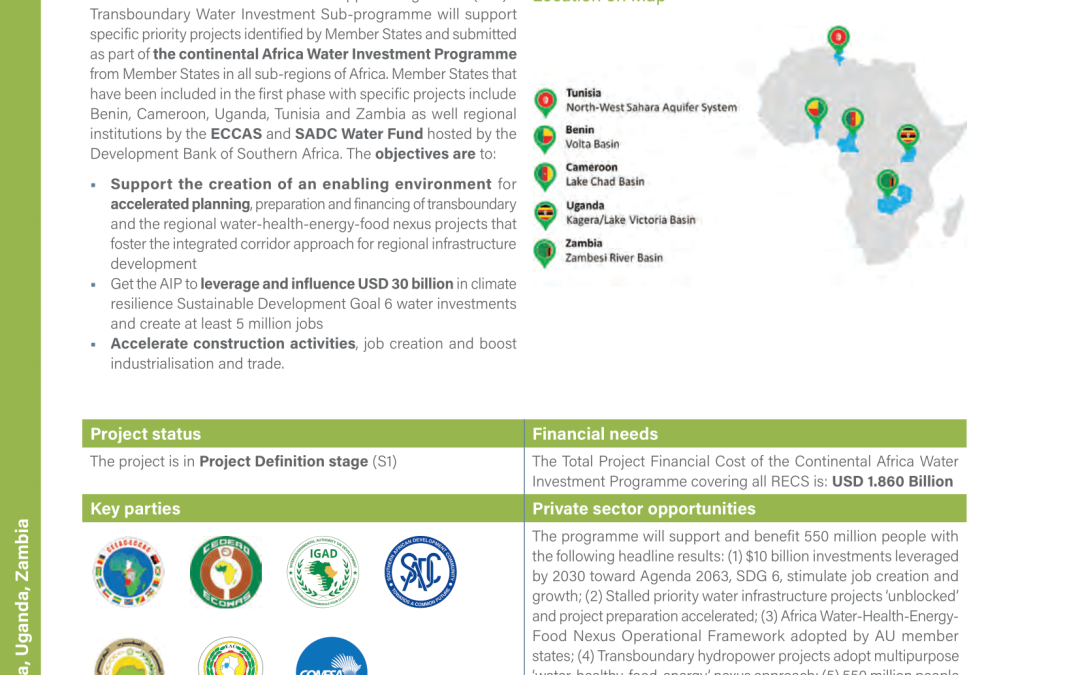
The Continental Africa Investment Support Programme (AIP)’s Transboundary Water Investment Sub-programme will support specific priority projects identified by Member States and submitted
as part of the continental Africa Water Investment Programme fromMember States in all sub-regions of Africa. Member States that have been included in the first phase with specific projects include
Benin, Cameroon, Uganda, Tunisia and Zambia as well regional institutions by the ECCAS and SADC Water Fund hosted by the Development Bank of Southern Africa. The objectives are to:
• Support the creation of an enabling environment for accelerated planning, preparation and financing of transboundary and the regional water-health-energy-food nexus projects that
foster the integrated corridor approach for regional infrastructure development
• Get the AIP to leverage and influence USD 30 billion in climate resilience Sustainable Development Goal 6 water investments and create at least 5 million jobs
• Accelerate construction activities, job creation and boost industrialisation and trade.





